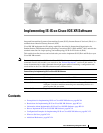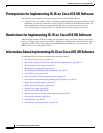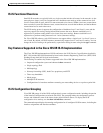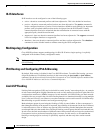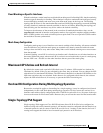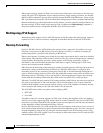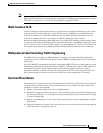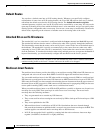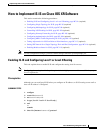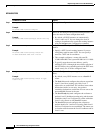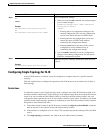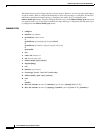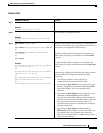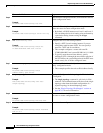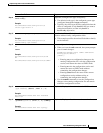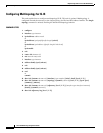
Implementing IS-IS on Cisco IOS XR Software
How to Implement IS-IS on Cisco IOS XR Software
RC-91
Cisco IOS XR Routing Configuration Guide
How to Implement IS-IS on Cisco IOS XR Software
This section contains the following procedures:
• Enabling IS-IS and Configuring Level 1 or Level 2 Routing, page RC-91 (required)
• Configuring Single Topology for IS-IS, page RC-93 (required)
• Configuring Multitopology for IS-IS, page RC-98 (optional)
• Controlling LSP Flooding for IS-IS, page RC-102 (optional)
• Configuring Nonstop Forwarding for IS-IS, page RC-106 (optional)
• Configuring Authentication for IS-IS, page RC-108 (optional)
• Configuring MPLS Traffic Engineering for IS-IS, page RC-110 (optional)
• Tuning Adjacencies for IS-IS on Point-to-Point Interfaces, page RC-113 (optional)
• Setting SPF Interval for a Single-Topology IPv4 and IPv6 Configuration, page RC-116 (optional)
• Enabling Multicast-Intact for IS-IS, page RC-118 (optional)
Note To save configuration changes, you must commit changes when the system prompts you.
Enabling IS-IS and Configuring Level 1 or Level 2 Routing
This task explains how to enable IS-IS and configure the routing level for an area.
Note Configuring the routing level in Step 4 is optional, but is highly recommended to establish the proper
level of adjacencies.
Prerequisites
Although you can configure IS-IS before you configure an IP address, no IS-IS routing occurs until at
least one IP address is configured.
SUMMARY STEPS
1. configure
2. router isis instance-id
3. net network-entity-title
4. is-type {level-1 | level-1-2 | level-2-only}
5. end
or
commit
6. show isis [instance instance-id] protocol



